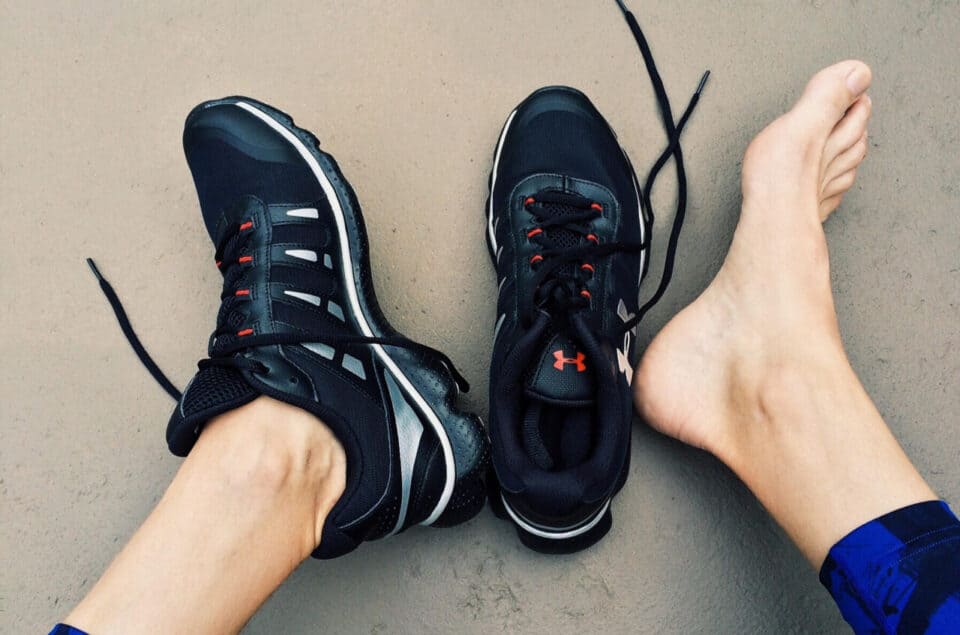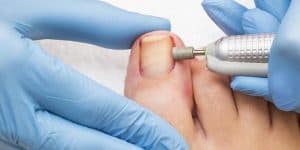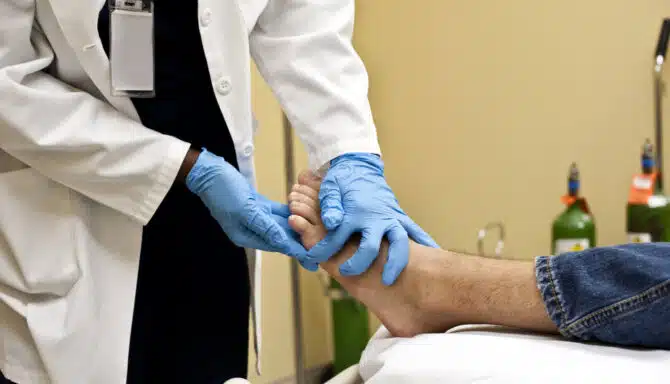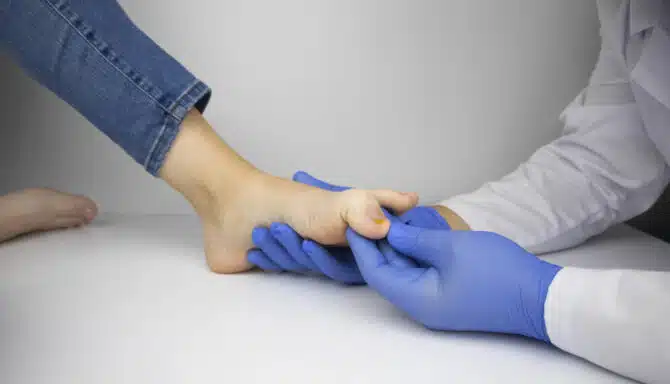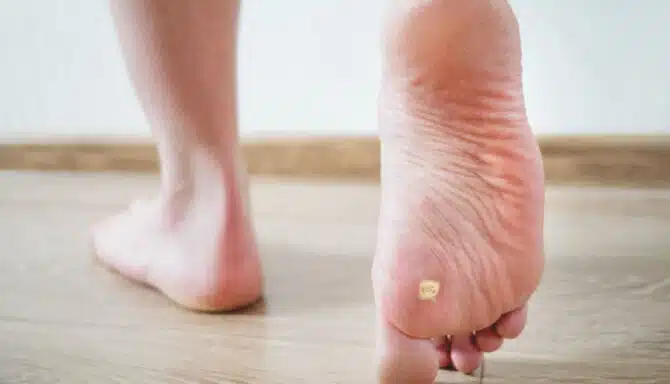Your shoes take you on a journey each day. And our feet need those shoes to help them with that journey. Obvious right? Not really: Many of us choose shoes that are too small, and unfortunately bear the consequences. And remember, “footwear” doesn’t necessarily mean what you wear for every day. They can be slippers, gym shoes and gardening shoes. All of these can be too small and cause foot pain – and you may not even realize it!
Just because you can put a shoe on doesn’t mean it’s “good fit”. A shoe can still be a “bad fit” or too small even if you are able to get your foot into it. And “too small” is not only about the length of the shoe. It could mean that the toe box is too close to the tips of your toes, the sides are squeezing the side of your feet, the heel notch is digging into your skin, or the top is pressing into the bridge of the foot.
Our feet also slowly change as we grow older. Sometimes arthritis starts, some people may get bunions, others get swelling, and our arches can flatten. So that same size shoe – the one you have worn for ever – now starts to fit a bit too snugly. In addition, over time shoes will wear down, seams start to appear and that same shoe just doesn’t fit like it used to.
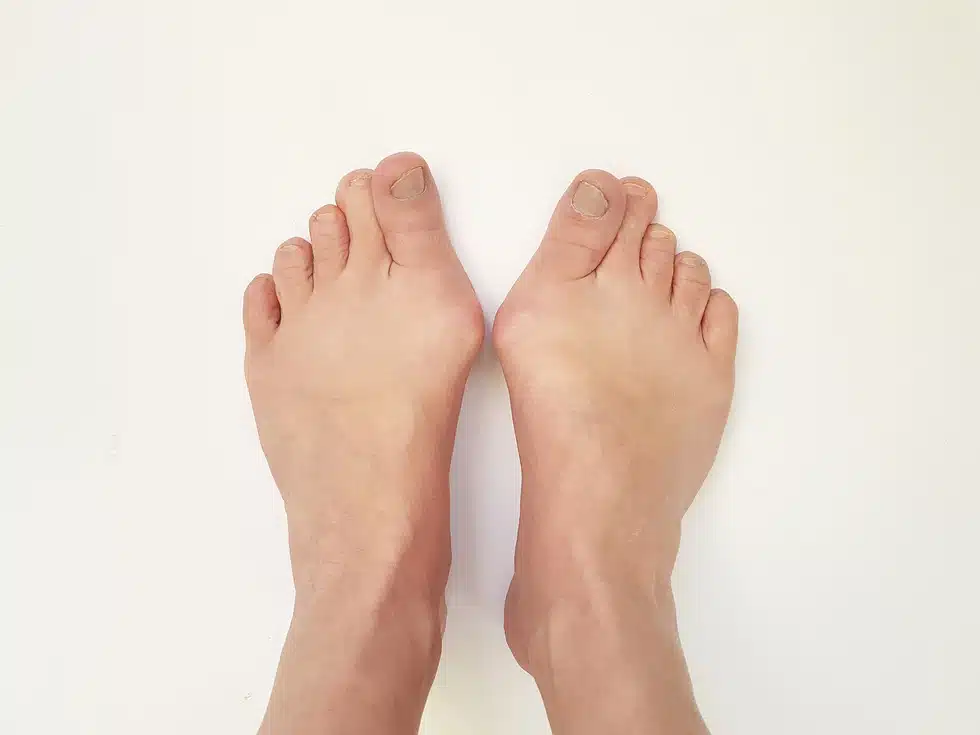
So how exactly can you tell if your shoes are too small? Here are the warning signs to keep an eye out for:
Here are the most common warning signs that your shoes could be too small
Blisters
An all too common but a painful issue. Unless they are caused by a sunburn, an infection or an allergy, foot blisters are caused by friction from the shoe material repeatedly rubbing against your skin. If your skin is damp it makes it much worse. If you’ve noticed the fluid-filled pockets appearing on your feet, your shoes are probably too small. They may also not be the appropriate type of shoe for the work you are doing.
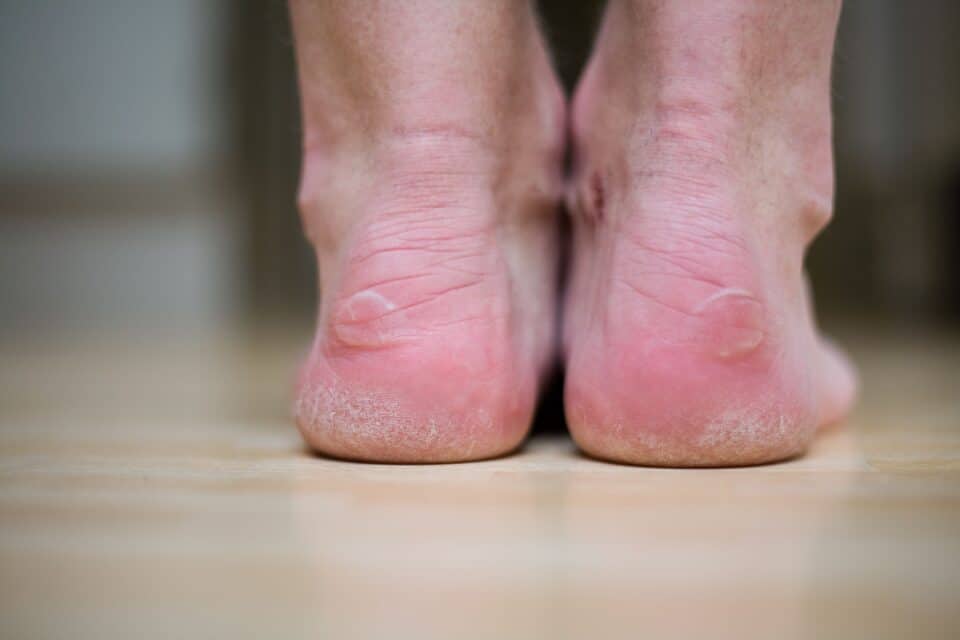
Bruised Toenails
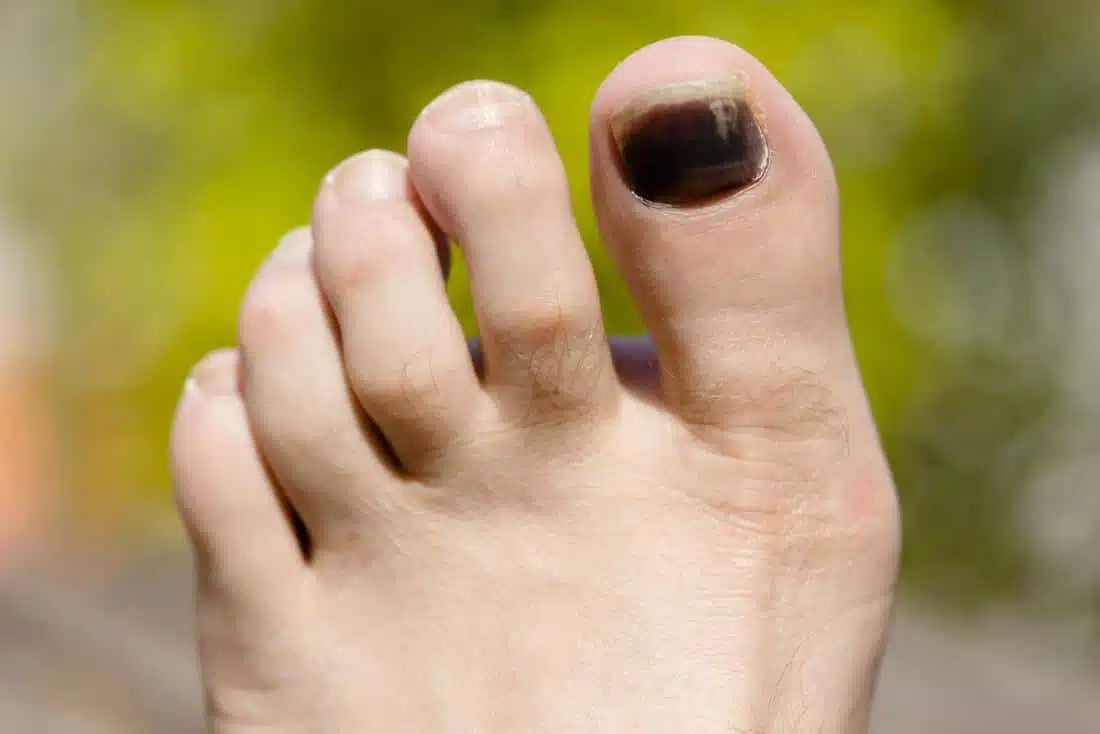
Toenail bruises come from impact. It can be direct one-off impact or tiny micro impacts over time. The impact could be from stubbing your toe on a step. Or it could be from knocking your toenails on the edge of the toe box over and over (this is why runners often have bruised toenails). Since the big toe is usually the longest toe (unless you have a Morton’s toe), your big toenail can get traumatized from repeated knocking if our shoes are too short. And if your shoes are too narrow, both the big toenail and little toenail can become traumatized due the shoe squeezing on it from the sides. Toenail bruises from impact are also very common if you have clawed toes (which can occur if you’ve been wearing shoes that are too short consistently throughout your life). Over time repetitive trauma can also cause toenails to thicken.
The blood trapped under the nail makes the toenail change colour. The nail goes from red to brown to purple and then black. It will stay that colour until it grows out after 6 to 9 months. If a toenail is traumatized too much and too often, it may fall off. Another one will grow but it will take months to do go. Also if the matrix from where the nail grows is damaged due to that repetitive trauma, the nail can grow back thickened.
Hot Foot
You may recognize a sensation commonly called hot foot, where your feet are incredibly hot after going for a walk or finishing a workout. Friction from too-tight shoes will make your feet swell and feel like they’re burning. Sometimes it is also due to poor materials of the shoe, or not using the right shoe for the right activity.
Calluses
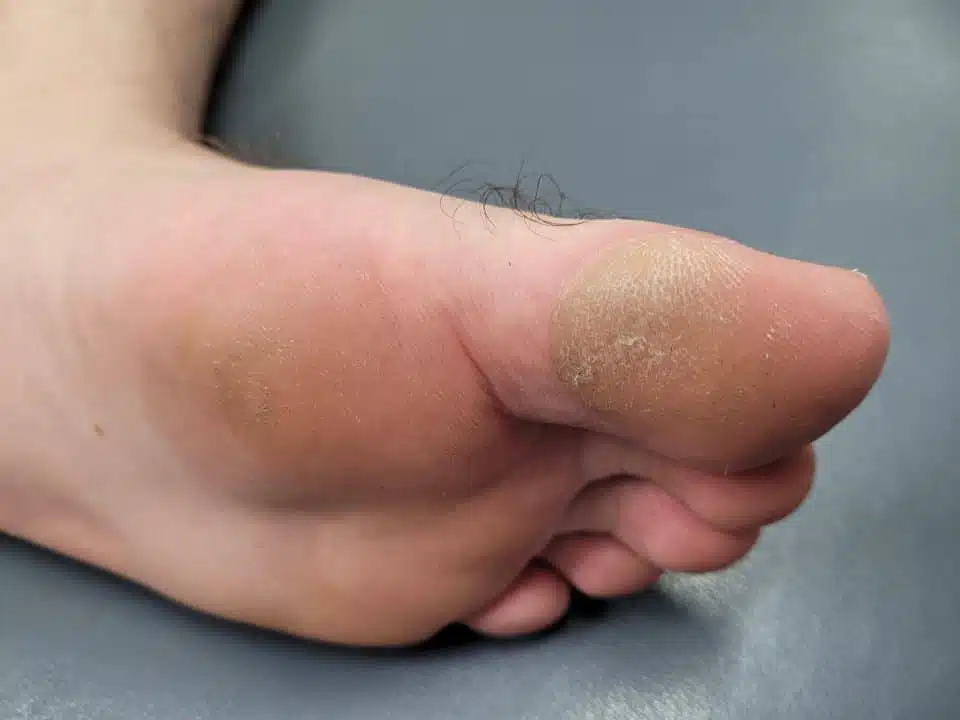
A foot callus is a rough and dry patch of skin on the sole. It occurs when the area is dealing with too much friction or pressure. The skin protects itself by forming a callus over the higher pressure areas. As time goes on, the pressure continues to build, the callus thickens, which creates more pressure, causes more thickening, and the cycle continues. One common cause of calluses is footwear that is too small, which causes friction against the skin.
Because the callus is there for a reason (pressure and friction), it is a good idea to first see a Chiropodist to find out the cause. They can also professionally treat your calluses. You should also go straight to a chiropodist if you have any conditions that reduce your immunity, healing or circulation (like Diabetes), or if you have difficulty bending and reaching your feet. As for over-the-counter solutions, emollients and moisturizers help with dryness, preventing cracks, improving the skin’s elasticity and resilience to friction. A foot file can also help remove the dead skin buildup. However, they won’t eliminate the underlying friction that’s causing the callus in the first place (i.e.: ill-fitting footwear).
Corns
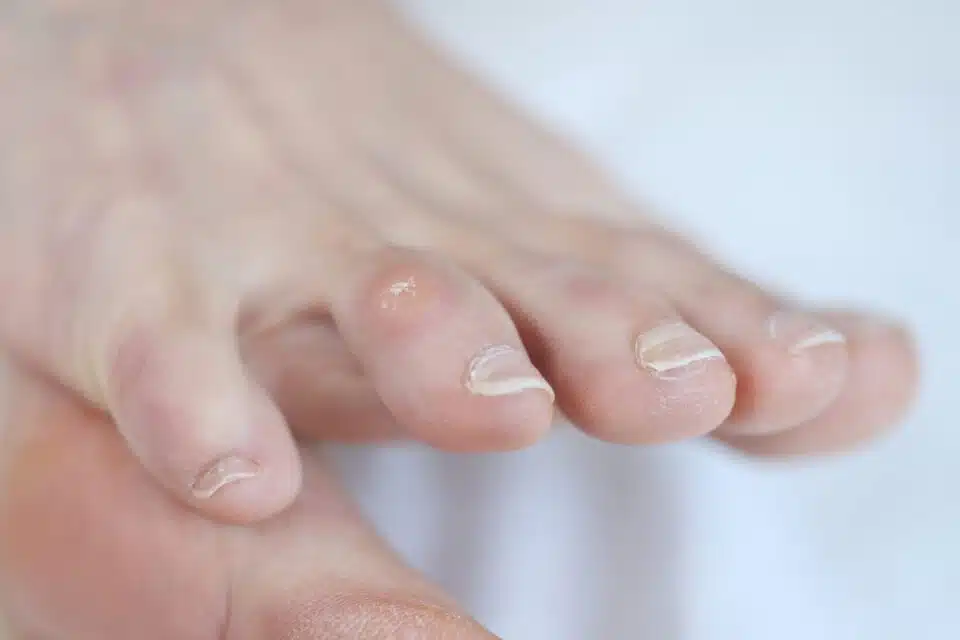
Corns are similar to calluses and are another common warning sign that your shoes could be too small. The main difference is that corns tend to be smaller and circular – from a 3D perspective, they’re shaped almost like upside down pyramids). The “peak” of the pyramid sticks into your foot, and the base is what you see. Like calluses, they’re caused by friction between your shoes and your foot, which can happen if your shoes are too small. Corns can be painful to the touch. They typically occur on the non-load bearing parts of the foot, whereas calluses form on the load bearing parts of the foot.
Here are some of the common places corns can form:
- In between your toes (caused by narrow footwear)
- On top of your toes (caused by footwear not being deep enough)
- Tips of toes corns (due to clawing of toes, which can occur after years of wearing shoes that are too short)
If you have a corn, it’s a good idea to book an appointment with the experts at Feet First clinic to undergo a safe and effective corn removal procedure. We can then figure out what is causing the corns in the first place. Some treatments can even prevent the corns from coming back.
Shoes too small? How do we fix it?
Here are our top 10 tips to avoid small shoes:
- Your shoes should fit when you first get them. You shouldn’t have to “work them in”. Getting blisters is not part of the breaking-in process.
- “Breaking-in” can only be done for leather dress shoes, which can be stretched to prevent any aches and pains. It was never meant for running shoes, sneakers or sandals.
- Length-wise, shoes should have approximately a finger’s width of room at the front of the longest toe. If you have less, you may need to go up half a size in length. Remember our feet are not the same size; one is always bigger than the other. So get the size that fits the longer foot.
- Width is an often forgotten feature, and one of the reasons why we get bunions and corns in between the toes corns. If you feel like your foot is getting squeezed on the sides, look for a wide width option. And if the shoe isn’t available in wide width, look for a different shoe all together. Don’t go up in length to compensate for a narrow shoe – you’ll just end up with a long narrow shoe.
- Depth is another a forgotten feature. This is especially important if you have any clawing or corns on top of your toes.
- If your shoes don’t fit properly, you shouldn’t wear them
- Put on your shoes properly when trying them on, otherwise you won’t be able to tell if they fit. First, knock your heel back so that the heel is in the counter and the foot is in the proper position. Then, lace up the shoe to secure your foot into that position. Then walk around to see how it feels.
- On that note, always stand up and walk around when trying on shoes. Our feet splay when we stand, so a shoe that may feel good when we’re sitting may be too small when we’re standing.
- Don’t be fooled by numbers. Your foot size isn’t the same as your shoe size. Like clothing, every brand of footwear fits differently. So if you’re a certain size in one brand, you may not be that size in another. Which leads to our final tip:
- Try on shoes before buying them. The only way to make sure your shoes aren’t too small is to test them out properly before you purchase them.
Kids shoes?
Check out our video on how to assess if you are buying the right shoe for your kids:
In conclusion, if your shoe doesn’t fit properly in the store, it won’t fit when you get home. Don’t bear through discomfort in hopes that your footwear will eventually mold to your feet. Getting the right size and fit should be your number one priority.
